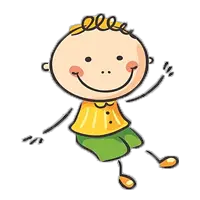


It's a common scenario among parents: you've just settled your baby down to sleep, only to find that they wake up shortly after, seeking comfort from nursing. While breastfeeding can be a soothing experience for both baby and mother, it can also lead to challenges when it becomes the sole method for baby to fall asleep. This situation often leaves parents feeling exhausted and uncertain about how to address the issue. If your baby uses you as a pacifier to sleep, understanding why this happens and exploring strategies to encourage independent sleep can make a significant difference in your baby's sleep routine and overall well-being.
What’s the main point?
As breastfeeding mothers, we often hear the advice that our babies are using us as pacifiers, implying that this behavior is somehow negative. However, it's essential to understand the intricacies of breastfeeding to decipher what's truly happening when our little ones nurse. When a baby latches onto the breast, they initially engage in quick suction movements, akin to urgently ringing a doorbell to trigger the milk ejection reflex. As the feeding progresses, their suction becomes more rhythmic and deeper, indicating active feeding. Yet, as they relax during the feed, they may appear to fall asleep while still suckling. Some may interpret this as the baby merely using the breast for comfort rather than nutrition. However, both the nutritional and affectionate suction phases are integral to the feeding process. The affectionate suction phase, sometimes termed non-nutritional suction, plays a crucial role in comforting and calming the baby, even though small amounts of milk may still be ingested. This phase contributes to the overall bonding experience and helps regulate the baby's emotions. Therefore, if breastfeeding is pain-free, and the baby is gaining weight adequately, there's no reason to deny them this important phase of suckling. Understanding and embracing both phases of suction can foster a positive breastfeeding experience for both mother and baby.
Conclusion
In conclusion, understanding the nuances of breastfeeding and recognizing the different phases of suckling can provide clarity for parents grappling with the notion of their baby using them as a pacifier. While it's common for babies to nurse for comfort, especially during sleep, it's important to acknowledge that breastfeeding serves multiple purposes beyond mere nutrition. The affectionate suction phase, characterized by non-nutritional suckling, plays a vital role in soothing and calming babies, contributing to their emotional well-being and fostering a strong bond between parent and child. As long as breastfeeding is pain-free and the baby is thriving, there's no need to view this behavior negatively. Embracing the comforting aspect of breastfeeding can enhance the parent-child relationship and promote a sense of security and contentment for both parties involved.
Note: Please also check your spam or junk email folder.